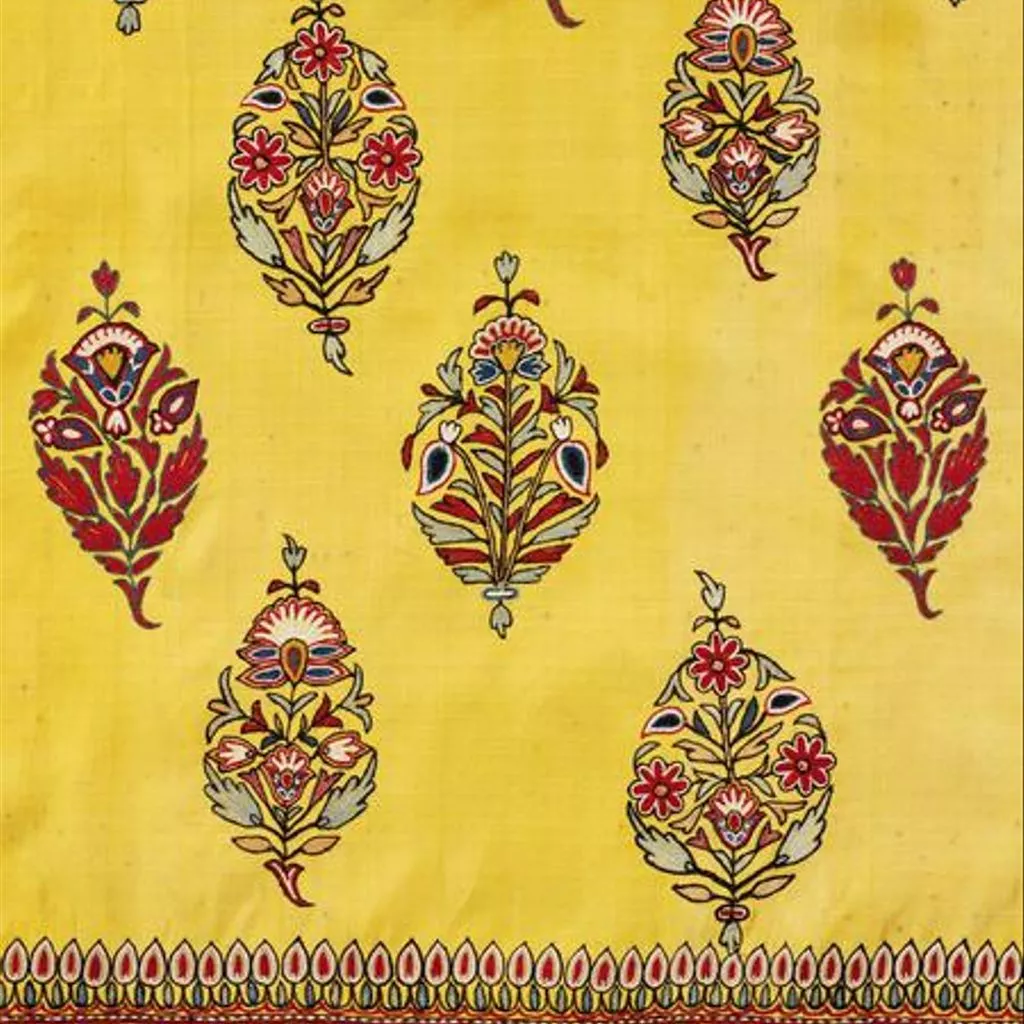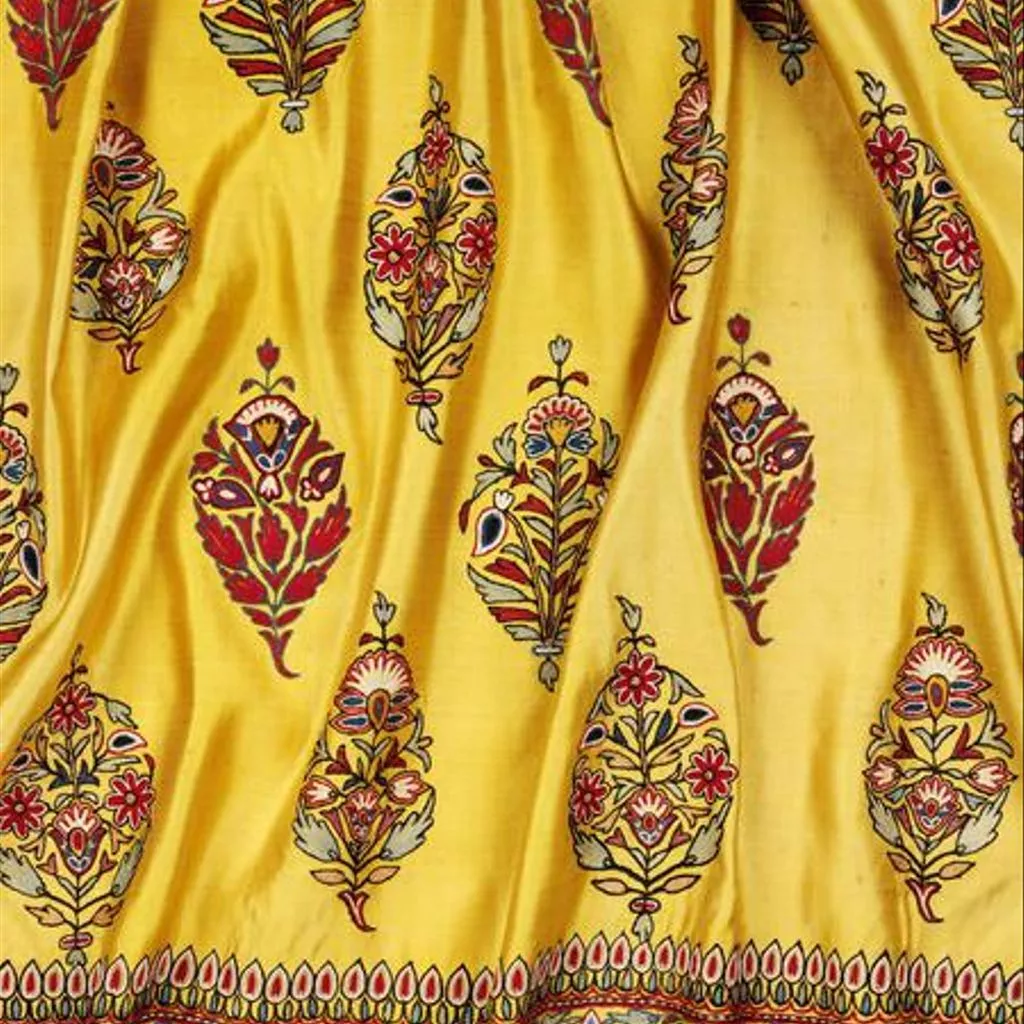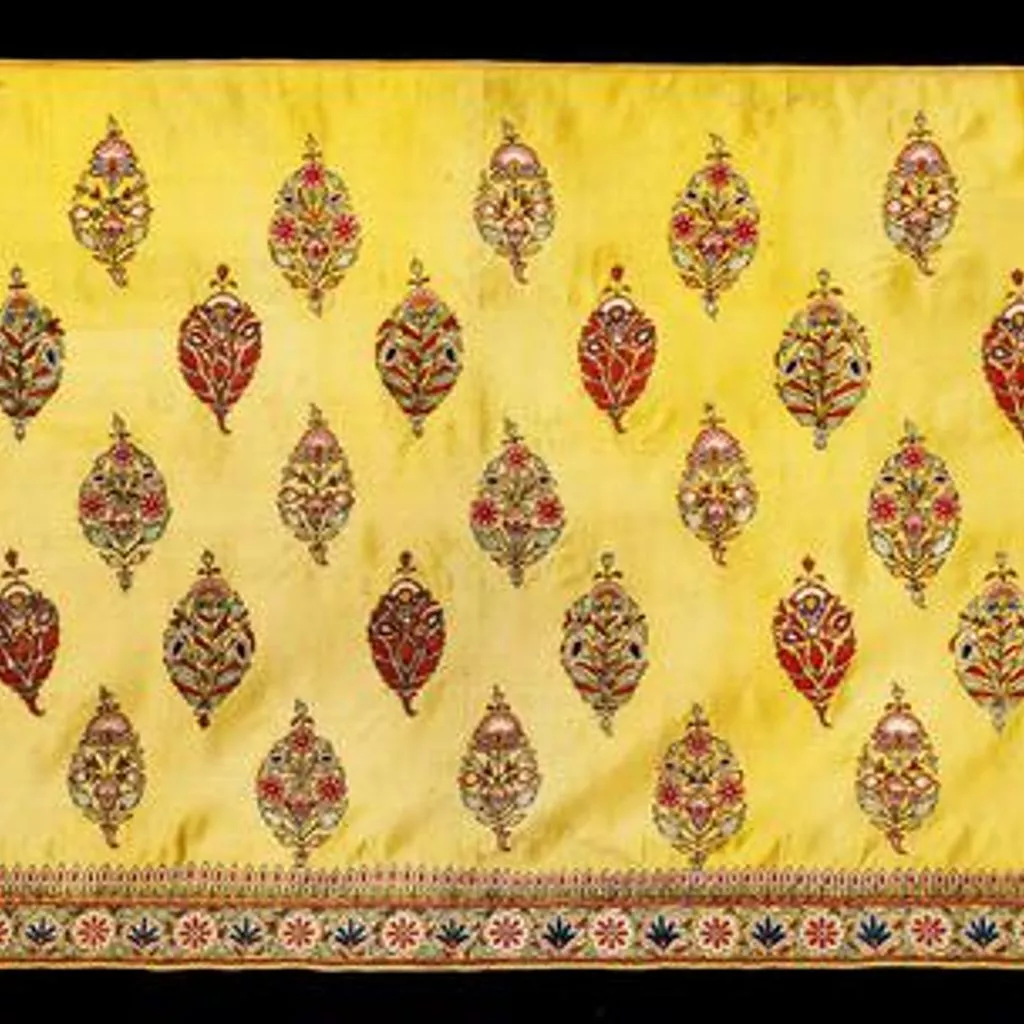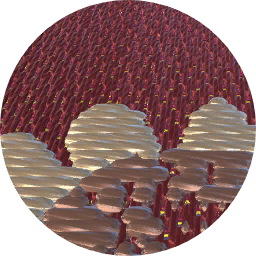Description
Unsewn skirt piece. Yellow satin-woven silk with silk embroidery.
This skirt piece was one of several examples of Indian textile illustrated in Owen Jones's book, The Grammar of Ornament, (London, 1856).
Garment, Kutch, Gujarat, mid 19th century
British Galleries:
The professional male embroiderers from the Mochi community in Kutch developed this embroidery technique by using a hook, as well as a needle. This was an adaptation of a method previously used on leather. Embroideries such as this were made for and sold to wealthy Indian patrons. [27/03/2003]
EMBROIDERED SKIRT
Professional male embroiderers of Kutch’s Mochi community embroidered skirt cloths like this for wealthy patrons. They used a hooked awl (ari) to create its fine chain-stitch, a technique adapted from leatherwork. The Rao (ruler) of Kutch sent this piece to London’s Great Exhibition of 1851 as part of ‘the dress of a lady of rank’.
Skirt length
Silk (satin weave) embroidered with silk
Kutch, Gujarat, about 1850
V&A: 791A-1852 [03/10/2015-10/01/2016]
This long piece of embroidery was originally made as a skirt, and would normally have been gathered into a cotton waistband with a drawstring at the top. The hem would probably also have been given additional weight by a facing of thicker material. The materials, design and technique are all typical of the fine embroidery of Kutch, part of the modern state of Gujarat in north-western India.This type of chain-stitch embroidery was the speciality of professional male embroiderers from the Mochi community of Kutch in Gujarat. They were originally leather workers and had developed a technique of silk embroidery on leather using a type of hooked awl. This method was later adapted for use on cloth. The Mochi work of Kutch is among the finest embroidery ever produced in India, and was used for textiles at the Mughal court as well as for the wealthy patrons of urban Gujarat.
Design & Designing
This skirt-piece is embroidered with a repeating floral pattern on a rich yellow ground. While the ground colour is typical of Kutch embroidery, the floral motifs have obviously been influenced by Mughal designs. Floral patterns like this were usually interspersed with peacocks or human figures in the more traditional Kutchi pieces.








